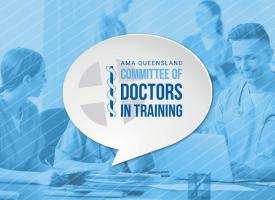COAG should adopt WA model on mandatory reporting
The AMA has called on the Federal and all State and Territory governments to follow Western Australia’s example when it comes to reporting doctors seeking treatment for mental health and stress.
The WA Government’s model exempts treating doctors from mandatory reporting requirements.

The AMA’s submission to the Council of Australian Governments (COAG) Health Council recommends adopting the WA model.
COAG’s Health Council has released a consultation paper on delivering nationally consistent laws on mandatory reporting provisions.
The consultation follows concerns that current laws requiring treating practitioners to notify authorities about doctors who seek help, are a major barrier to doctors accessing the care and support they need.
The Health Council’s consultation paper put forward four options.
AMA President Dr Michael Gannon said the WA model was the best option.
“Doctors deserve the right to access health services, just like their patients,” Dr Michael Gannon, who is from WA, said.
“Doctors and other health workers are at greater risk of mental illness and stress-related problems, yet the current laws inhibit many from seeking treatment for a mental health condition because they fear for their medical registration.
“The mandatory reporting laws have a twofold effect – some people will not seek help at all, and those who do may not divulge all the necessary information to receive appropriate care.
“The AMA is extremely concerned that we have a situation now where doctors may be avoiding appropriate health care, putting both themselves and their patients at risk.
“We know this. Doctors have told us. We have lost too many colleagues and friends to the scourge of mental illness. The figures compel us to act.”
Dr Gannon said the AMA welcomed the recent COAG decision to develop a nationally consistent approach to mandatory reporting.
He said of the four options to consider in the consultation paper, there was one clear standout.
“The AMA’s view is clear. We need a model that addresses the issues currently stopping doctors from seeking the treatment they need,” Dr Gannon said.
“We need a model that we know for certain will work, while still protecting patients. We need a model that can be adopted nationally.
“The AMA believes the current model in WA is the right one. It is a proven model. It has given doctors the confidence to seek the help they need and there is no evidence that it has diminished patient safety in any way.
“It is also a model that was recommended in the Independent Review of the National Registration and Accreditation Scheme, a Senate report, and a number of academic studies.
“It in no way stops the medical profession’s ethical and professional responsibilities to report a practitioner who may be placing the public at risk.”
Delegates at the AMA National Conference in May were unanimous in seeking amendments to the National Law, so as to not dissuade medical practitioners from seeking necessary medical treatment of assistance.
Options that simply reword the current legislation, or seek to maintain the status quo, Dr Gannon said, will do nothing but condemn doctors to continue to suffer in silence.
Data from the Australian National Coronial Information System shows that doctors and other health workers have the highest suicide rate among Australia’s white-collar workforce. Between 1 January 2011 and 31 December 2014, 153 health professionals died as a result of suicide.
An extensive study of more than 12,000 doctors by Beyondblue in 2013 revealed that 34.3 per cent cited concerns about their medical registration as a barrier to seeking treatment for a mental health condition.
The Western Australian Parliament accepted the medical profession’s arguments, and the Western Australian National Law contains an explicit exemption from mandatory reporting for treating doctors.
Australian Health Practitioner Regulation Agency (AHPRA) annual report figures show that mandatory notifications have risen in Western Australia since the exemption came into effect – from 12 in 2011/12 to 37 in 2015/16.
“Now is the opportunity to address the problem once and for all – because healthy doctors are best placed to help patients,” Dr Gannon said.
“Anything less puts both doctors and patients at risk.”
Submissions to the consultation process closed on September 29 and the COAG Health Council will consider the matter at its meeting in November.
CHRIS JOHNSON



